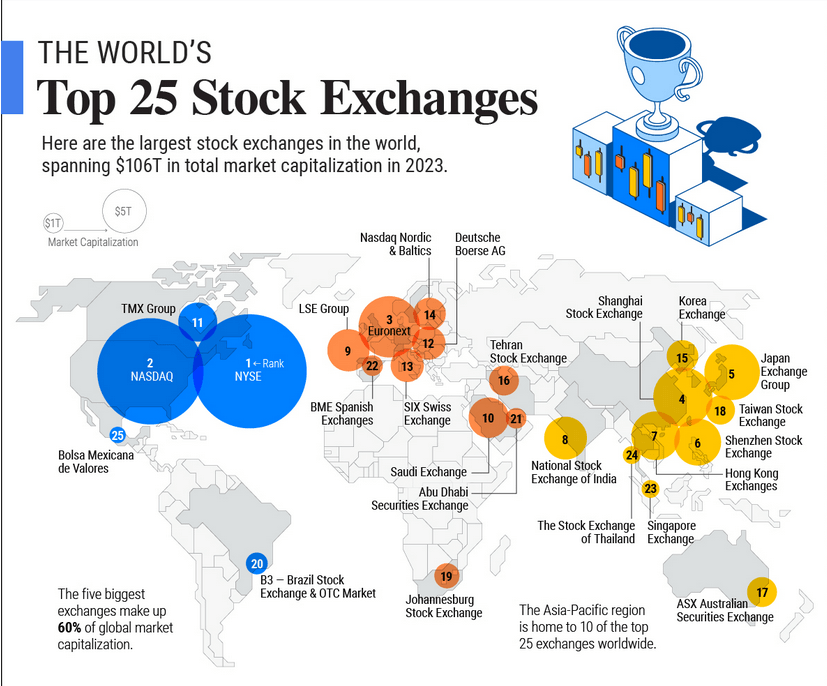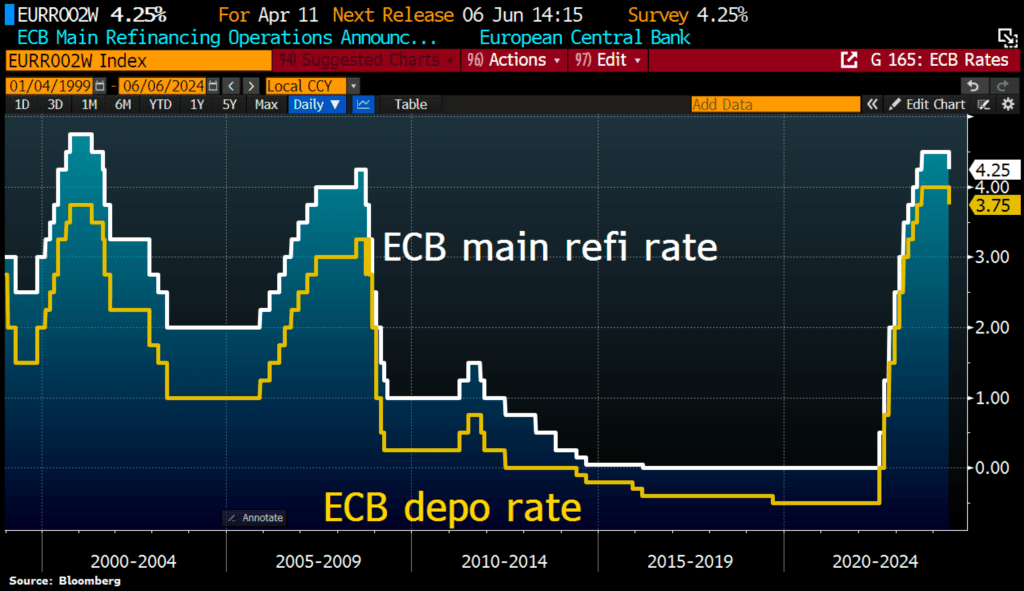Yes, you read that right: Texas will host a stock exchange. BlackRock and Citadel are lead investors in a new national stock exchange that plans on calling Texas its headquarters. The Texas Stock Exchange will file for registration with the SEC later this year and hopes to be operational in 2026. The exchange will be 100% electronic, meaning there will not be an iconic trading floor like the New York Stock Exchange (NYSE) or the commodity and futures exchanges in Chicago.
Many upstart exchanges have recently failed. Furthermore, older regional exchanges, like Boston and Philadelphia, which were bought out by the NYSE, no longer exist. However, the odds of success are better for the Texas Stock Exchange due to its backing by Citadel and BlackRock. Blackrock is the world’s largest money management firm, and, therefore, it can shift business toward the new exchange. Citadel is one of the largest electronic trading firms. Ergo, it can also force some of its trades to the new exchange. While the Texas Stock Exchange has financially strong supporters, the Exchange has stiff competition. The graphic below, courtesy of the Visual Capitalist, shows that the NYSE and NASDAQ are the largest stock exchanges in America and the world.
Market Trading Update
In yesterday’s commentary, we discussed how the mega-cap stocks continue to drive the market. This has left a widening gap between the S&P market-cap weighted index, the equal-weight index, and mid-cap and small-cap stocks.

This bifurcation of performance should not be overly surprising. The reason is that 100% of the entire market’s earnings growth comes from the top-7 stocks in the index. In other words, those improving earnings of the S&P index are non-existent if you strip out the “Magnificent 7.”

The problem with this, of course, is that it leaves very little room for error in Wall Street expectations. Eventually, when the economy slows, earnings will slow even for those magnificent companies, and the market will need to reprice accordingly.
Trade accordingly.
The ECB Cuts Rates
We shared news of the Bank of Canada cutting its interest rates two days ago. Yesterday, the European Central Bank (ECB) cut its interest rates for the first time since it began tightening rates two years ago. It lowered interest rates by 25 basis points on its three key monetary facilities as follows: Deposit (to +3.75%), Marginal Lending (to +4.50%), and Main Refi (to +4.25%).
ECB President Lagarde said they would now wait and see what other central bankers do. Clearly, this is a reference to the Fed. The U.S. economy has been much more robust than most other economies. Therefore, there is less need for the Fed to cut rates. The problem facing the ECB and other central banks that cut rates is the potential for dollar strength, which would increase inflationary pressures.
World central banks often coordinate their efforts. Assuming the next couple of rounds of employment and inflation data are weak, the Fed could ease rates as soon as the July 31st meeting, although the market only implies a 16% chance they will do so at that meeting.
Lower For Longest
The chart below from Charlie Bilello shows the current yield curve inversion is the longest in at least 60 years. This means monetary policy has been restrictive for a long time. What the graph doesn’t tell you is whether it’s restrictive enough. The massive stimulus from the pandemic caused a surge in economic activity and inflation. Restrictive policy is needed to help balance the economy. Even with the yield curve inversion, which limits profits on bank lending and thus disincentivizes lending, the economy has done well. However, with the stimulus having primarily left the system, restrictive policy will weigh on the economy. Once the Fed starts to cut rates, which could come as early as July, the yield curve will start to uninvert, and Fed policies will become less restrictive.
Tweet of the Day
“Want to achieve better long-term success in managing your portfolio? Here are our 15-trading rules for managing market risks.”
Related: Investment Opportunities in Power Grid Upgrades and Expansion






